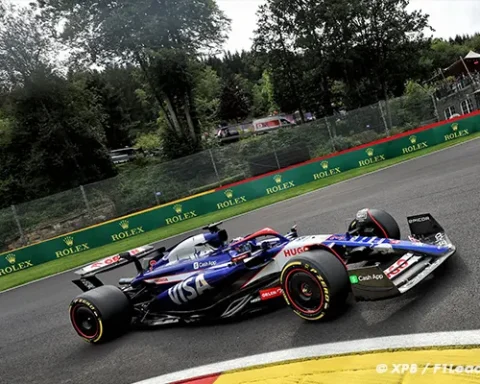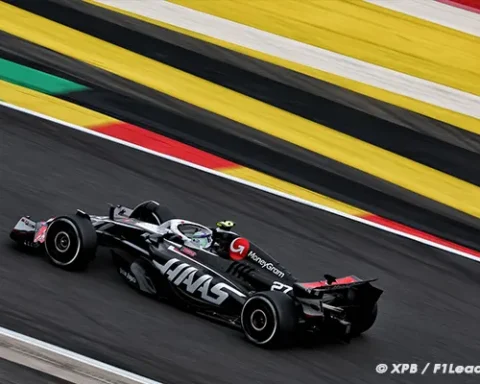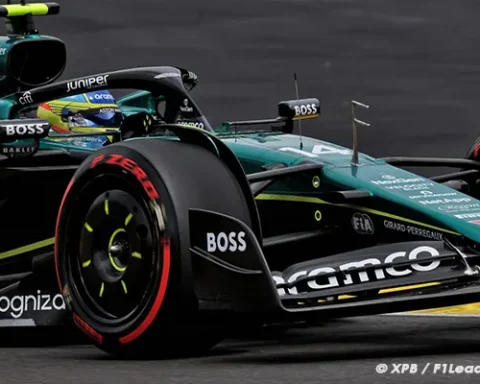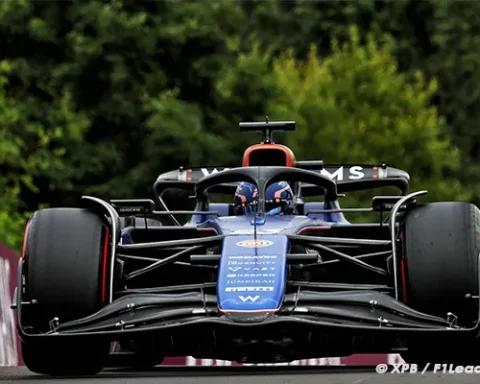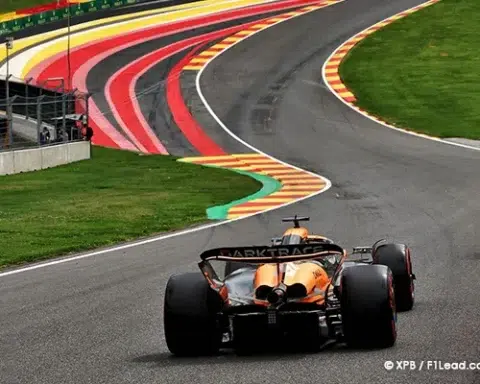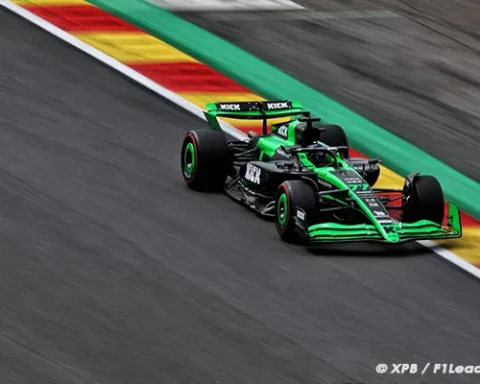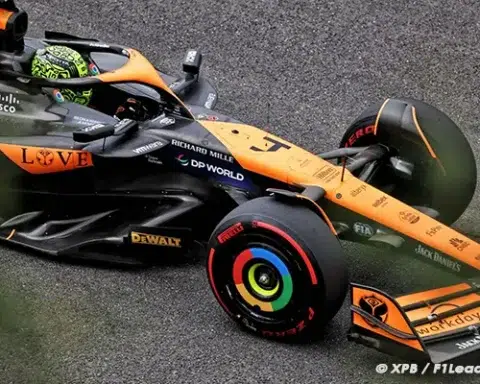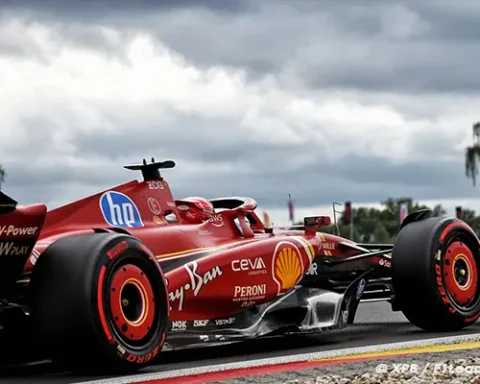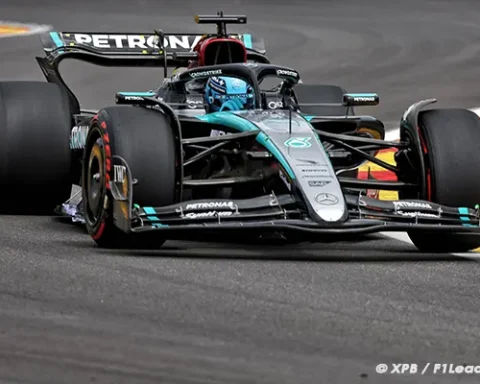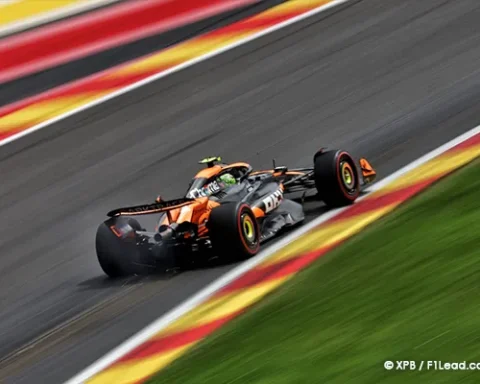In the world of Formula 1, 2024 looms as a year of reckoning for Mercedes. The team’s recent struggles are more than a mere blip on the radar, hinting at a potential permanent decline.
While Red Bull Racing displayed resilience after their winning streak was disrupted, Mercedes confronts a distinct challenge – the loss of top talent rather than technical prowess.
This article examines their transition from focusing on racing issues to broader societal concerns and assesses how it might affect their performance in the upcoming season.
Mercedes, after reigning supreme from 2014 to 2021, might excuse its recent dip in performance, yet a continued slump into 2024 may indicate a shift from a temporary setback to a prolonged decline.
Mercedes’ 2022-2023 Transition: Key W15 Upgrades for Racing Resurgence”
Securing third in the 2022 championship and improving to second the following year is far from catastrophic. However, for a team that amassed an impressive 15 constructors’ and drivers’ titles previously, this downturn is a stark contrast. The introduction of the Mercedes W15 is crucial for a course correction.
Although they won’t unveil the new vehicle until next month, here are six pivotal areas that Mercedes must address in anticipation to meet its lofty standards.
From the outset, the Mercedes W15 must embody perfection in its fundamentals, eradicating the inherent structural flaws that previously impeded its performance.
These crucial structural decisions are already in place, and technical director James Allison has confirmed significant modifications are on the horizon.
Allison confirmed, “We will definitely introduce a new chassis, along with entirely new front and rear suspension and gearbox. None of these elements will remain the same.”
While such updates are not out of the ordinary, they represent a critical juncture for Mercedes to rectify issues that capped the potential of its 2023 vehicle. Even with last year’s major upgrade package in Monaco, those constraints persisted.
Mercedes Formula 1 2024 : Crucial Chassis and Suspension Changes
In addition to modifying the car’s suspension, the team will enhance the front-end anti-dive introduced by last year’s package, along with making substantial alterations to the rear. The anticipated changes to the monocoque are also expected to play a pivotal role.
This will not only enable Mercedes to adjust the placement of the mandatory side-impact structures, which facilitate the ‘zero-sidepod’ bodywork geometry but might also see the adoption of a more V-shaped chassis, similar to what Red Bull implemented in ’22 and evolved in ’23.
Therefore, what might be termed the ‘skeleton’ of the vehicle is set for a significant overhaul in 2024. It’s imperative for Mercedes to execute these changes flawlessly to avoid constraining themselves for another season.
Mastering the current era of F1 racing hinges on the precise synergy between aerodynamic traits and the mechanical framework. This underscores why the upcoming modifications to the front and rear suspension are so crucial.
Last year’s Monaco upgrade aimed to enhance platform control, allowing Mercedes a marginal advancement by integrating more anti-dive into the front suspension.
However, the gearbox casing restricted rear changes, limiting Mercedes’ ability to emulate Red Bull’s radical anti-squat geometry achieved through an added structure atop the gearbox.
Mercedes Formula 1 2024 : A Focus on Performance Concept Dynamics
With the 2024 model, Mercedes is ready to fully exploit its comprehensive understanding of the interplay between aerodynamics and mechanics.
Allison, reflecting on the past year’s progress, noted a significant elevation in understanding the current F1 cars. He stated, “Quite a lot different,” when asked about the level of understanding compared to a year prior.
“We’ve considerably advanced our grasp of harmonizing the aerodynamic and spring platforms. That’s the primary challenge,” he elaborated.
F1 circles frequently toss around the term ‘concept,’ yet it often remains ambiguously defined. Many commonly mistake it as referring to the car’s physical appearance, but in today’s F1, teams more accurately use it to describe the performance ranges they aim to target.
The ‘zero sidepod’ design is a prime example, frequently mentioned as the core concept behind Mercedes’ 2022 and early 2023 cars.
However, as the team continually clarified, that wasn’t the case. Instead, Allison speaks of conceptual decisions in terms of the car’s performance dynamics rather than its aesthetic.
Allison points out these decisions encompass a wide array of choices influencing the car’s aerodynamic behavior. It goes beyond mere downforce to consider the ride heights at which downforce is generated and how this interacts with the car’s overall stance.
He emphasizes that these are the critical conceptual choices a team makes, prioritizing performance characteristics over the car’s visual design.
Mercedes’ 2024 Challenge: Overcoming New Concept Dilemmas
These strategic choices are crucial in directing how wind tunnel testing is conducted, especially concerning ride-height sensitivity. If Mercedes makes the right calls, the challenge then lies in developing swiftly enough along that trajectory to rival Red Bull.
In 2022, Mercedes made an impressive rebound, clinching race victories late in the season. Encouraged by this progress, the team decided to extend its car concept into 2023. However, they were thrown a curveball with new rule changes aimed at addressing the physical strain of porpoising on drivers.
The primary regulation adjustment was a 15-millimeter increase in the floor-edge height. Allison referred to this as a “quite late” change but recognized it would reduce the cars’ bouncing. The dilemma was how to adapt to this new scenario.
The debate centered around whether to leverage the 15mm increased floor height by reducing the car’s conceptual ride height, given that porpoising would be less problematic and the team could effectively utilize the extra downforce, or to stick with a similar concept. Mercedes opted for the latter.
The team made this choice influenced by the significant performance gains they saw in 2022, which perhaps misleadingly assured them that they were on the right path.
Allison later conceded that Mercedes had been overly conservative, resulting in a car designed to operate at a higher-than-optimal ride height.
Mercedes’ Aggressive Shift: Key to Challenging Red Bull
Throughout 2023, Mercedes progressively changed its approach, and the W15 will mark the first vehicle developed entirely around this new paradigm. Embracing this aggressive strategy is crucial for Mercedes if it aims to challenge Red Bull’s dominance.
Upon reassuming his role as technical director midway through the 2023 season, Allison (pictured above, center) pinpointed a critical vulnerability within the team.
Stunned by a sudden drop in performance, he described the team’s operations as “fragmented” with members frantically striving for a turnaround.
Coordinating an F1 design team comprising hundreds of individuals to work harmoniously is a formidable challenge, yet the team expects the transition in car concept initiated last season to come to fruition in 2024.
Mercedes F1 2024 Challenge: Overcoming Old Patterns for Success
A looming concern remains: should Mercedes not begin the season with the desired strength, can it avert falling back into old, disjointed patterns?
Facing Red Bull in the 2024 championship appears a daunting task for Mercedes. While not beyond the realm of possibility, a more realistic aspiration for a successful season would be narrowing the gap and consistently positioning itself as a formidable contender for race victories.
The crucial factor will be Mercedes’ development pace throughout the season. If it begins at a disadvantage but evolves more rapidly than Red Bull, harnessing a car with considerable potential, this could pave the way for a title contention in 2025.
Mercedes previously misinterpreted strong performances as pivotal breakthroughs, as they did in Spain 2022 or Austin 2023, only to subsequently experience downturns.
This cycle of hope and setback has defined Mercedes’ journey over the past two seasons. The team must brace for a protracted journey ahead.
What’s certain is that the Mercedes W15 will mark a departure from its forerunners, a transition partially initiated in 2023.
As Wolff has stated, “We are completely rethinking our chassis design,” and “every component has been revamped.” Yet, he also acknowledges the possibility of missteps.
Success or failure, or perhaps an outcome in between, is on the horizon for the W15. Regardless of the result, it’s imperative for the entire team to react constructively and avoid excessive reactions.
Mercedes’ Racing Edge Lost Post-Niki Lauda: A Critical Analysis of Wolff’s Leadership
The advantage Mercedes had in racing vanished when Niki Lauda departed. Wolff and Hamilton replaced his true leadership, pragmatism, and common sense in the day-to-day operations with their political agenda.
Personally, I believe Wolff’s management abilities have been greatly overstated in the past, thanks to the team’s success that he didn’t build. It’s easy to be a team principal when you’re winning without contest, but adversity reveals character, and what it revealed about Wolff doesn’t cast him in a positive light.
Let’s talk about pit stops; they finished a modest 7th in 2023. Their strategy decisions, while occasionally bold (as seen in Singapore), are far too conservative overall, and sometimes downright foolish. As Jacques Villeneuve put it, they can’t seem to look up from their computer screens. Publicly throwing the team under the bus, Toto Wolff admitted he had to apologize multiple times to the factory staff for his outbursts. One can only imagine the damage he’s causing to the drivers and the company morale with constant ridicule.
All hope could be restored, though. With the W15, they need to find a second contender to the W14, at the very least, to remain competitive and in the title race. If Ferrari and McLaren also find a solution to tire wear, we might have an exciting season on our hands. However, when Red Bull finds another 0.3 seconds or more, it will be very challenging. That’s why Horner is hoping Checo steps up his game in qualifying.
Mercedes Formula 1 2024 Mercedes Formula 1 2024 Mercedes Formula 1 2024
You May Like Also – WHO WILL BEAT RED BULL IN F1 2024?
Stay informed on the latest Formula 1 updates by following us on Facebook and Twitter.

